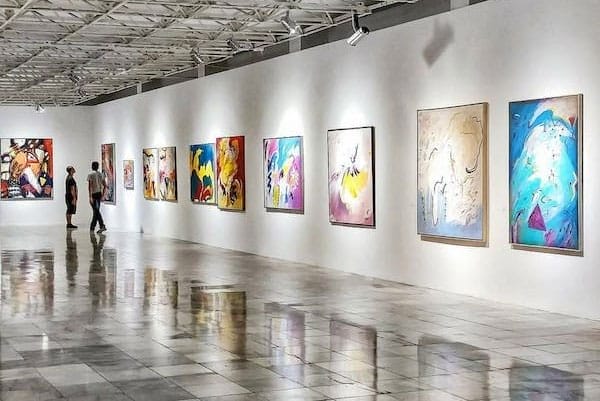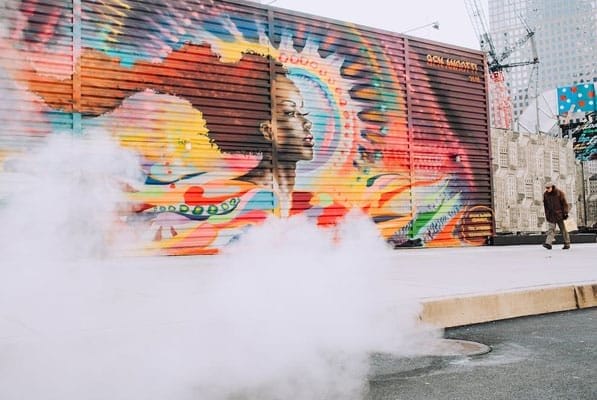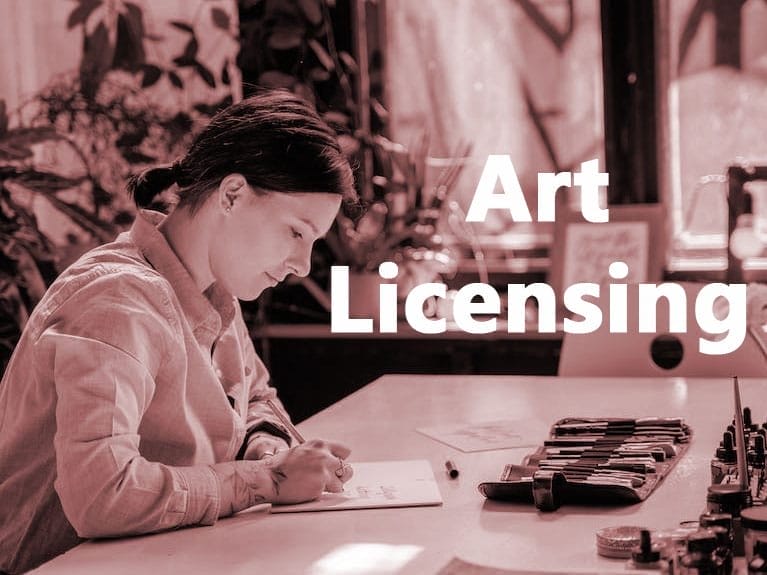The art world is a complex tapestry of cultural shifts, market trends, and evolving tastes. For an individual artist, understanding the intricacies of this industry can be a daunting task. This is where representatives come into play.

Artist representation refers to the professional relationship between an artist and an individual or entity that acts on the artist’s behalf to promote, sell, and manage business aspects related to their artistic work. This representative, often possessing expertise in the art market and industry dynamics, serves as an intermediary between the artist and potential buyers, galleries, publishers, and other industry stakeholders.
The primary goal of artist representation is to enhance the artist’s visibility, handle contractual and financial matters, and provide guidance to further the artist’s career. In exchange for these services, representatives typically receive a commission or fee based on sales or other agreed-upon terms.
The Value of Artist Representation

In the vast and often intricate landscape of the art world, artists, whether emerging or established, can sometimes find themselves overwhelmed by the business side of their craft. While the act of creation is deeply personal and often solitary, the journey of bringing one’s art to the public and monetizing it requires a different set of skills and expertise. This is where representation comes into play.
Why Emerging Artists Benefit from Representation
- Expertise and Knowledge: The art industry, with its nuances, trends, and ever-evolving dynamics, can be challenging to navigate. Representatives possess the knowledge and experience to guide artists, ensuring they make informed decisions that align with their career goals.
- Networking: A significant part of an artist’s success hinges on connections. In the art world, who you know can often be as crucial as what you create. Building a robust network can be the difference between an artwork gathering dust in a studio and being showcased in a renowned gallery. Representatives often come with years of industry relationships, having cultivated ties with gallery owners, collectors, publishers, and other key players.
- Focus on Creation: Artistry demands focus, passion, and undivided attention. However, the business side of art – from marketing and sales to logistics and administration – can be time-consuming and distracting. When artists partner with representatives, they delegate these business tasks, allowing them to channel their energy solely into their creative process.
- Visibility and Exposure: Representatives, with their industry insights, can identify the best avenues for showcasing an artist’s work, be it in prestigious galleries, influential art fairs, renowned publications, or dynamic online platforms. They can orchestrate exhibitions, collaborate with media, and leverage social media, ensuring that the artist’s work reaches the right audience, garners attention, and sparks conversations.
- Negotiation Power: The art of negotiation is a skill honed over years. Whether it’s finalizing the price of an artwork, determining the terms of an exhibition, or securing rights for reproduction, representatives bring to the table their negotiation prowess. Their experience ensures that artists are not underselling their work or agreeing to unfavorable terms. They advocate for the artist, ensuring that contracts are transparent, fair, and beneficial.
- Career Development: While immediate opportunities and sales are essential, a sustainable art career requires long-term planning and strategy. Representatives don’t just focus on the ‘now’; they look at the bigger picture. They can provide guidance on how to diversify an artist’s portfolio, explore new mediums, or tap into emerging markets.
How Representation Works
At its core, representation is a partnership. The new artist and the representative work together, with the artist focusing on creation and the representative handling the business side. This includes promoting the artist’s work, seeking out opportunities, negotiating contracts, and sometimes even managing the artist’s finances. Regular communication is crucial, ensuring both parties are aligned in their vision and goals.

Expected Costs
While the services of representatives are invaluable, they aren’t free. Most representatives work on a commission basis, taking a percentage of the artist’s earnings from projects they secure. This commission can range anywhere from 10% to 50%, depending on the industry, the type of representation, and the specific agreement between the artist and the representative.
Some representatives might charge upfront fees, while others might have monthly retainers. It’s essential for artists to understand these costs, discuss them openly with potential representatives, and ensure that the benefits outweigh the expenses.
In essence, representation can be a game-changer for artists, providing them with the tools, connections, and guidance they need to thrive in the competitive art world. However, like any partnership, it’s crucial to find the right fit – a representative who truly understands and believes in the artist’s vision.
Types of Artist Representatives
The art world is expansive and varied, encompassing a wide range of artistic disciplines. With such diversity in artistic expression, there’s a corresponding variety in the types of professionals who can assist artists in showcasing and monetizing their work. These professionals are known as representatives.
Diversity in Representation
Art comes in many forms, and so do the opportunities for representation. Some representatives specialize in promoting artists to galleries, ensuring their works are seen by those who appreciate and buy art. Others focus on licensing, where they help artists grant permission to companies to use their art for commercial purposes. There are also representatives who coordinate large-scale public art projects, helping artists bring their visions to community spaces.
Choosing the Right Fit
For artists, selecting the appropriate representative is essential. It’s about more than just finding someone to manage business dealings; it’s about partnering with someone who genuinely understands and respects the artist’s work. Artists should research and engage with various representatives to determine who aligns best with their objectives and style. By doing so, they ensure that their art is presented in the best possible light and reaches the right audience.
Artists, as you navigate your career, remember the importance of representation. Take the time to understand the different types of representatives available and select the one that aligns with your goals and artistic endeavors. With the right support, your work can achieve greater recognition and success.
As an Artist, here are some of the main types of representation you can have:
Gallery Representatives
Gallery representatives are the people who run art galleries. They pick the art that gets shown and help sell it. Think of them as the bridge between you, the artist, and the people who want to buy or see your art.

When an artist is represented by a gallery, it means their work has been deemed a good match for the gallery’s aesthetic and clientele. Finding gallery representation can be a transformative step in an artist’s career. To initiate this process, artists often reach out directly to the gallery or the gallery director. This professional acts on behalf of an artist, ensuring their work is showcased in the best light and connects with the right audience.
What They Do:
These representatives plan art shows, take care of moving and setting up your art, and make sure it looks its best in the gallery. They also introduce your work to people who might want to buy it, like art collectors, and to others who just love art.
Why Work With Them:
Commercial Gallery representation can give your art a lot of attention. Your art gets to be seen by more people in a gallery. This means more people might want to buy it. Gallery representatives also know many people who love art and might want to buy it. They can talk to these people for you and help you sell your art for a good price. Plus, they take care of the hard work of setting up art shows, so you can focus on making more art.
Remember, a gallerist’s role is to support you and your art. They can help you show your work to the world and make sure you get the recognition you deserve.
Artist’s Agents
Artist’s agents are akin to your personal business managers, specifically tailored for the art realm. They are the individuals who take on the responsibility of managing the business aspects of your art career, ensuring that you can dedicate your energy and passion to the creative process. With their expertise, they bridge the gap between the artist and the often complex world of art commerce.

What Do They Do?
They’re not just negotiators; they’re advocates for your work. When there’s a contract on the horizon, they meticulously review it, ensuring that your interests are protected.
Beyond just talking to gallerists and museums, they actively represent artists and seek out platforms and venues where your art can shine.
They also play a pivotal role in marketing, PR, and promotion of your work, ensuring it reaches audiences and potential buyers who would genuinely appreciate it. And when unique opportunities arise, whether it’s an international exhibition or a collaboration with a renowned artist, they ensure you’re in the loop.
Why Work with One?
- Guidance: The art world is vast and can sometimes feel overwhelming. An agent provides direction, helping you navigate exhibitions, sales, and even critiques. They offer invaluable advice, ensuring your decisions align with your artistic vision and career goals taking your art business to the next level.
- Connections: It’s not just about introductions; it’s about building lasting relationships. Your agent has a network of contacts, from gallery owners to art critics. These connections can lead to exciting opportunities, collaborations, and even mentorships.
- Peace of Mind: Juggling the demands of creation with business can be taxing. With an agent, you have the assurance that someone is looking out for your best interests. They handle negotiations, manage schedules, and even assist with financial planning related to your art sales.
In essence, an artist’s agent is more than just a manager; they’re a partner in your artistic journey. Their expertise, connections, and dedication can elevate your career, ensuring your art gets the recognition and platform it truly deserves.
Licensing Agents
Licensing agents are professionals skilled in the art of negotiation and representation. They assist artists in forming agreements that allow their artwork to be featured in a variety of commercial settings. Whether it’s a design on a t-shirt, an illustration in a magazine, a fine art print, or a mural in a cafe, these agents ensure that artists’ creations find their way into the public eye.

Acting as a bridge, they connect the creative world of artists with the commercial needs of businesses, ensuring that art gets the exposure it deserves while being used appropriately.
What They Do:
When you have a licensing agent by your side, you have an advocate. They actively communicate with companies, from small local businesses to big brands, to strike deals to sell their work that are favorable to you. Their main job is to ensure that the terms of any agreement respect your rights as an artist.
They handle the details, from defining how and where your art can be used to setting the duration of its use. And when it comes to getting paid, they ensure that you receive a fair amount, typically in the form of royalties. This means that for every product sold or ad displayed with your artwork, you get a share of the earnings. With a licensing agent, you can be confident that your art is not only reaching a broader audience but also generating income in a fair and consistent manner.
Why Work with One?
- Earn Money While You Sleep: One of the best things about working with a licensing agent is the chance to earn passive income. This means you can make money from your art even when you’re not working. Every time a company uses your art, you get paid.
- Keep Your Art Safe: Licensing agents also make sure companies use your art the right way. They protect your rights, so you don’t have to worry about someone misusing your work.
By teaming up with a licensing agent, you can focus on creating art while they handle the business side of things. It’s a win-win for artists who want to see their work reach a wider audience and earn more money.
Illustration Agent
An Illustration Agent is like a trusted guide for illustrators. They stand by your side, helping you navigate the vast world of art and business. These agents specialize in representing illustrators, people just like you, who create visual art for books, magazines, advertisements, and more. They understand the unique challenges and opportunities in the illustration field and use this knowledge to support and boost your career.

What They Do:
Imagine having someone who always has your back. That’s what an Illustration Agent does. They actively show off your artwork to the right people, making sure to get your work the attention it deserves.
When there’s a job offer or project on the table, they handle all the tricky contract details, ensuring you get a fair deal. And remember that collection of your best works? Your agent helps manage and refine your portfolio, ensuring it always shines and impresses potential clients.
Why Work With One:
- Better Opportunities: With an Illustration Agent by your side, you’ll find doors opening to jobs that pay more. They have the connections and know where to find the best gigs.
- Shine Brighter: Your artwork is amazing, and it deserves to be seen. Your agent will promote and market your portfolio, making sure it reaches the right eyes.
- Peace of Mind: Ever worry about the fine print in contracts? With an agent, you won’t have to. They ensure your rights are protected and that you’re treated fairly in all deals.
Having an Illustration Agent means having a partner who’s as invested in your success as you are. They’re there to lift you up, guide you, and help your illustration career flourish.
Digital Art and Animation Agents
Digital Art and Animation Agents are your go-to professionals if you’re a digital artist or animator. They bridge the gap between your creative skills and industries hungry for digital talent, like film studios, video game developers, and advertising agencies. With the digital world growing every day, these agents know where your skills fit best and can help you shine in the right spotlight.

What They Do:
These agents wear many hats to support you. First, they find and secure contracts that match your expertise, ensuring you get projects that resonate with your style.
They’re also your window to the latest trends and shifts in the digital art world, offering insights that can keep you ahead of the curve. And don’t forget about the legal side! They’re there to make sure your digital rights are protected, so your work remains yours and is used fairly.
Why Work With One:
Imagine having a guide in the vast landscape of digital media. That’s what these agents are for. They open doors to high-paying jobs in areas you might not have even considered.
The digital world changes fast, and they offer advice to help you adapt and grow. Plus, they handle the nitty-gritty of contracts, ensuring you get fair deals and your rights are always safeguarded. With their support, you can focus on what you do best: creating amazing digital art and animations.
Art Fair Agents
Art Fair Agents are professionals who specialize in showcasing artists at art fairs. These events are bustling hubs where art lovers, collectors, and galleries come together. An Art Fair Agent is your ally, ensuring your work stands out in these vibrant settings. They know the ins and outs of these events, making them invaluable partners for artists aiming to make a mark.
What They Do:
Imagine you’re an artist, eager to display your work at a major art fair. There’s a lot to manage: from booking the right spot to setting up your booth. This is where an Art Fair Agent steps in. They take care of the nitty-gritty details, ensuring your booth is in a prime location. They also handle the logistics, from transporting your art safely to setting it up in the most appealing way. And it doesn’t stop there. They actively promote you, making sure attendees are drawn to your work. With their expertise, you can focus on what you do best: creating and interacting with potential buyers.
Why Work With One:
- Exposure: Art fairs attract a dedicated audience. With an agent by your side, your art is presented to a vast crowd of enthusiasts and serious collectors, increasing your chances of sales and recognition.
- Logistical Support: Organizing an exhibit can be overwhelming. Your agent manages all the details, from booth setup to tear-down, letting you focus on your art and potential clients.
- Networking: These events are filled with industry professionals. An agent can introduce you to key players, opening doors to future opportunities and collaborations.
Mural Agents
Mural agents are special representatives for artists who create big murals or art in public spaces. Think of them as the bridge between artists and the places that want big, beautiful art on their walls or spaces. They understand the world of public art and know how to make big art projects happen.

What They Do:
Imagine you’re an artist who wants to paint a huge mural on the side of a building. Sounds exciting, right? But where do you start? This is where a mural agent comes in. They look for places that want murals. They also handle all the tricky stuff like getting permission to paint on a building and making sure you have all the right permits. And when it comes to talking about money and contracts, they’ve got your back. They make sure everything is clear and fair, so you can focus on creating amazing art.
Why Work With One:
- Access to Public Art Projects: Mural agents have connections. They can introduce you to people and places that are looking for artists just like you.
- Logistical Support: Big art projects can be complicated. Mural agents help with all the details, from finding the right spot to making sure you have all the supplies you need.
- Contract and Permit Help: Don’t worry about the paperwork. Your mural agent will handle contracts and make sure you have the right permits to create your art in public spaces.
By working with a mural agent, you get a partner who understands your art and knows how to make big projects happen. They’re there to support you every step of the way.
Art Publisher
Art publishers play a significant role in the art world by taking artists’ original creations and reproducing them for a wider audience. These reproductions can come in various forms, such as prints, posters, cards, or even digitally formatted images. By doing this, art that might have been limited to a single piece in a gallery can now be enjoyed by many in their own homes.
This process not only amplifies the reach of the artist’s work but also makes art more accessible and affordable for enthusiasts and collectors. It’s a bridge between the exclusivity of original art and the broader public’s desire to own and appreciate beautiful creations.
What They Do:
Imagine you’ve created a beautiful painting. An art publisher can take that painting and produce high-quality prints of it. They handle all the steps: from choosing the right paper and printing method to packing and shipping. Once the prints are ready, they help get them into stores, online shops, and even art fairs. They also spread the word about the art, making sure people know it’s available to buy.
Why Work With One:
- Broader Audience Reach: By making copies of your art, more people can enjoy and buy it. It’s like sharing your talent with a bigger crowd.
- Additional Income Streams: Selling one original piece is great, but selling many copies can bring in more money over time.
- Marketing and Distribution Support: Art publishers know how to promote and sell art. They have the tools and connections to make sure your work gets noticed and bought.
Working with an art publisher can open doors for artists, helping them reach new fans and earn more from their creations.
Final Words

Finding the right representation is key to your success as an artist. It’s like choosing the best tools for your craft. The right agent or representative understands your art, your goals, and your vision. They can open doors to opportunities you might not have found on your own.
It’s essential to do your homework. Take the time to research different representatives and see which ones align with your needs. Reach out, ask questions, and build connections. By making informed choices and forging strong partnerships, you set yourself up for a brighter and more successful future in the art world. Remember, your talent deserves the best support. Choose wisely and thrive.





